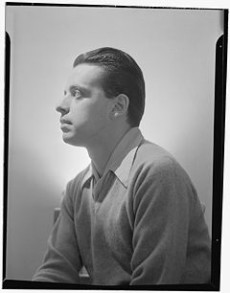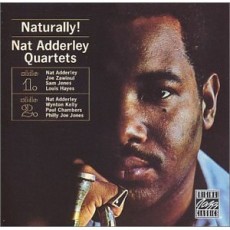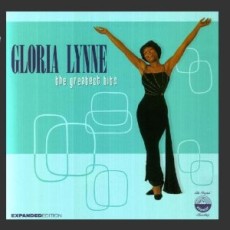
Daily Dose Of Jazz…
Nesuhi Ertegun was born November 26, 1917 in Istanbul, Turkey, moving to Washington, DC when his father was appointed Ambassador to the United States in 1935. From an early age, Nesuhi’s primary musical interest was jazz, having attended concerts in Europe. While at the Turkish Embassy he also promoted jazz concerts during 1941-44.
After his father’s death in 1944, Ertegun stayed in the U.S., moved to California, got married and established the Crescent record label. He purchased Jazz Man Records and issued traditional jazz recordings producing classic Kid Ory revival recordings plus sessions with Pete Daily and Turk Murphy. He went on to work with Contemporary Records and Imperial Records developing their jazz catalog for the later.
In 1955, he was preparing to work for Imperial Records to develop their jazz record line and develop a catalog of LPs. However, his younger brother Ahmet Ertegun and Jerry Wexler persuaded him to become a partner in Atlantic Records over the jazz and LP department.
As a producer he worked with John Coltrane, Charles Mingus, Ornette Coleman, the Modern Jazz Quartet, Ray Charles, Chris Connor, the Drifters, Bobby Darin, Roberta Flack and numerous others while being first recruiting songwriters and producers Leiber and Stoller. He went on to establish WEA International venturing into Latin-American rockers and other world music groups and remained at the helm until his retirement in 1987.
Nesuhi Ertegun, writer, editor, producer, educator, art collector and soccer promoter died on July 15, 1989, at the age of 71, due to complications following cancer surgery. He was posthumously inducted into the Rock and Roll Hall of Fame, awarded the Grammy Trustees Award for lifetime achievement, the National Soccer Hall of Fame and had the Nesuhi Ertegun Jazz Hall of Fame at Jazz at Lincoln Center dedicated to him.

Daily Dose Of Jazz…
Nathaniel Adderley was born on November 25, 1931 in Tampa, Florida but grew up in Tallahassee when both his parents were hired to teach at Florida A&M University. While living in Tallahassee in the early 40s, he and his brother Julian played with Ray Charles, in the ‘50s he worked with his brother’s original group, and with Lionel Hampton and J. J. Johnson.
In 1959 joined his brother’s new quintet and stayed with it until Cannonball’s death in 1975. It was during this tenure that Nat composed “Work Song,” “Jive Samba,” and “The Old Country” for this group that have since become jazz standards.
After his brother’s death he led his own groups and recorded extensively working with Ron Carter, Sonny fortune, Johnny Griffin, Antonio Hart and Vincent Herring, among others. Adderley moved to Harlem in the 1960s, Teaneck, New Jersey in the 1970s, before moving to Lakeland, Florida where he was instrumental in the founding and development of the annual Child of the Sun Jazz Festival, held annually at Florida Southern College.
Nat Adderley, cornetists and trumpeter in the hard bop and soul jazz genres, lived with diabetes throughout his career, an illness that resulted in his death from complications on January 2, 2000. He left the jazz world a body of work that has been memorialized by a host of jazz musicians.

Daily Dose Of Jazz…
Teddy Wilson was born Theodore Shaw Wilson in Austin, Texas on November 24, 1912. By his teenage years he was enamored with the music of Bix Beiderbecke and King Oliver and decided to make a living playing jazz. He studied piano and violin at Tuskegee Institute where his father was head of the English Department and his mother was chief librarian. A year later he joined Speed Webb’s band as one of seven arrangers, re-orchestrating in close harmony the songs of Beiderbecke and Hodges. He went on to join Louis Armstrong, understudying Earl Hines in his Grand Terrace Café Orchestra, and Benny Carter’s Chocolate Dandies.
By 1935 Teddy joined Benny Goodman trio with Gene Krupa becoming the first black musician to perform in public with a previously all-white jazz group. With the help of jazz producer John Hammond, Wilson got a contract with Brunswick Records in 1935 and started recording hot swing arrangements of popular songs of the day with the growing jukebox trade in mind. He recorded fifty hit records with various singers including Lena Horne, Helen Ward and Ella Fitzgerald while also participating in sessions with Lester Young, Roy Eldridge, Charlie Shavers, Red Norvo, Buck Clayton and Ben Webster.
Wilson formed his own short-lived big band in 1939 and then led a sextet at Café Society from 1940 to 1944. In the 1950s he taught at the Julliard School, appeared as himself in the motion picture The Benny Goodman Story, and during the next two decades lived quietly in suburban New Jersey. Pianist and arranger Teddy Wilson passed away on July 31, 1986 in New Britain, Connecticut at age 73.
More Posts: piano

From Broadway To 52nd Street
West Side Story opened at the Winter Garden Theatre on September 26, 1957. Stephen Sondheim and Leonard Bernstein composed and wrote the score for the musical that ran 732 performances. Larry Kert, Carol Lawrence, Chita Rivera, Mickey Cain and Ken Leroy were the stars of the show that gave the jazz world such classics as Somewhere, I Feel Pretty, Tonight, Maria and Cool.
The Story: On the streets of West Side Manhattan in the late summer of 1957, there is mounting racial tension between rival white American and Puerto Rican gangs to maintain control of the neighborhood – the Jets and the Sharks. An interracial relationship blossoms between Tony and Maria who see past their ethnic differences. However, Maria’s brother Bernardo and leader of the Sharks does not want this love-match to succeed. Destined to be short-lived, a rumble between the two gangs ensues, Maria begs Tony to stop it, the fight escalates from lists to knives and Tony ultimately kills Bernardo.
When Bernardo’s girlfriend Anita learns of his death she is overcome with emotion and seeking out Maria, who already knows, discovers Tony is with her. Tony leaves for refuge at Doc’s drugstore after which they learn that Chino was seeking revenge for Bernardo by shooting Tony. Maria begs Anita to go tell Tony but after a mock rape at the hands of the Jets, Anita delivers a different message – that Maria is dead. In shock Tony runs out screaming for Chino to come kill him. On the playground Tony and Maria see each other but before they can embrace Chino shoots and kills Tony.
Broadway History: The Off-Off-Broadway movement began in 1958 as a reaction to Off-Broadway, and a “complete rejection of commercial theatre”.[2] Among the first venues for what would soon be called “Off-Off-Broadway” were coffeehouses in Greenwich Village, particularly the Caffe Cino at 31 Cornelia Street, operated by the eccentric Joe Cino, who early on took a liking to actors and playwrights and agreed to let them stage plays there without bothering to read the plays first, or to even find out much about the content. Also integral to the rise of Off-Off-Broadway were Ella Stewart at La MaMa and Al Carmines at the Judson Poets’ Theater, located at Judson Memorial Church, Playbox Studio, New York Theatre Ensemble, The Old Reliable, The Dove Company and the Nuyorican Poets Cafe.
Sponsored By
www.whatissuitetabu.com

Daily Dose Of Jazz…
Gloria Lynne was born Gloria Wilson on November 23, 1931 in New York City and grew up in Harlem. Her professional career began in 1951 after winning first prize at the “Amateur Night” at the Apollo Theater. She shared the stage with contemporary nightclub vocal ensembles as well as with Ella Fitzgerald. During the Fifties she recorded as part of such groups as The Enchanters, The Del Tones and recording as a soloist under her birth name. However, most of her work was released under her stage name on both Everest and Fontana record labels.
Gloria showed much promise early on, especially after TV appearances, including the Harry Belafonte Spectacular, but her development suffered through poor management, some unscrupulous recording executives who profited while she was left virtually penniless, saved only by the fact that she was able to work steadily and earn her money from performance.
Throughout the 1960s she had several hits including “June Night”, “Love I Found You,” and “I Wish You Love” in 1964 that became a big hit and her signature song, “I’m Glad There Is You” and a pop tune “(You don’t have to be a) Tower Of Strength” that proved her versatility. Lynne went on to record such albums as “Soul Serenade”, “Love And A Woman”, “Where It’s At”, and “Here, There And Everywhere” all of which showcased her versatility in jazz, R&B, soul and melodic “pop”.
During her earlier years on-the-road she shared bills with Ray Charles, Billy Eckstine, Johnny Mathis, Ella Fitzgerald and Harry Belafonte. As Lynne moved into jazz in her later career she worked with top-flight musicians and arrangers and performed with many of the jazz greats, including Quincy Jones, Bobby Timmons, Philly Joe Jones and Harry “Sweets” Edison. She penned lyrics with Herbie Hancock for his “Watermelon Man” and “All Day Long” with Kenny Burrell.
She has been inducted into the National Black Sports and Entertainment Hall of Fame, honored with a Pioneer Award by the Rhythm & Blues Foundation, with Gloria Lynne Day in New York City, received the National Heritage Award, the Prestigious Eagle Award and Outstanding Achievement In Jazz at the New York MAC Awards.
Vocalist Gloria Lynne continued to record, perform and write until passing away on October 15, 2013 at age 83 in Newark, New Jersey.
More Posts: vocal



